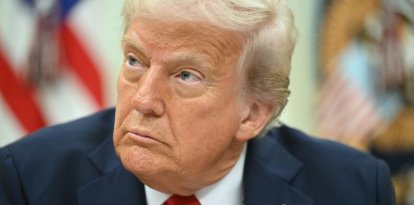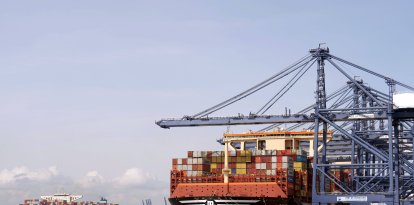How will Trump's tariffs on China, Canada, and Mexico impact the US economy?
President-elect Trump promised during his campaign to reduce inflation inherited from Joe Biden's administration. Will the tariffs help or hurt him in his effort?

Donald Trump in a file image
Tariffs on goods from China, Canada and Mexico is arguably the most controversial economic proposal of President-elect Donald Trump, who won the election in part by promising to lower prices on food and staples for U.S. citizens.
During the campaign, Trump repeated a mantra: reduce taxes and tariffs to lower the inflation inherited by Joe Biden's administration and protect the manufacturing industry, which has declined notably especially in job generation.
The president-elect has repeatedly stated that the tariffs would not only protect companies operating in U.S. territory from foreign competition, but would also function as an incentive for companies with production abroad to move their operations back inside the country and thus avoid the costs associated with imports. However, economic experts question this perspective, arguing that, in reality, those who end up assuming the impact of import taxes are not the exporting companies, but U.S. consumers.
In that sense, the Wall Street Journal dedicated a strong criticism to the president's tariff plan, detailing that his tariff threats, if carried out, would generate a price increase for Americans for both the food and technology sectors.
"Import-reliant businesses—especially automobile manufacturers—could face significantly higher costs that they would then pass on to consumers. Farmers and other exporters could face retaliatory tariffs," says the WSJ. "Trump’s promise to impose 25% tariffs on Canada and Mexico and an additional 10% on Chinese imports on the first day of his presidency could lead to higher prices, just as the country appears to be turning a corner on inflation."
According to the analysis, based on Trump's latest tariff threats, economists at the Yale Budget Lab revised their estimates of how these could affect the economy.
According to the experts, tariffs of 25% on Canada and Mexico and 10% added to existing tariffs on China, assuming these three countries will respond to the U.S. by imposing retaliatory tariffs, would raise U.S. consumer prices by 0.75% next year, a number that would of course affect consumption and thus the country's economic growth.

Politics
Trump anuncia cuáles serán sus primeras órdenes ejecutivas: aranceles a los productos de México, Canadá y China
Emmanuel Alejandro Rondón

Economy
Trump's Treasury Secretary's ambitious economic proposal to rescue the US economy
Emmanuel Alejandro Rondón
The Budget Lab also stated that that estimate is reduced to 0.65% if U.S. households substitute their purchases with domestic products or imported options with lower tariffs, a situation that does not fix the estimate that tariffs could amount to a loss of purchasing power of more than $1,000 per household in 2023 dollars.
In addition to Yale economists, the Peterson Institute for International Economics, a Washington D.C. think tank, estimates that prices would rise by 1% if the president-elect keeps his word to impose harsh tariffs on China, Mexico and Canada.
The institute also estimates that U.S. GDP in 2026 would be 0.6% lower than it otherwise would be, and total U.S. employment would be negatively impacted by 1%.
Despite the criticism of Trump, the WSJ acknowledges that, with the imposition of tariffs the economy generates losers and winners. For example, domestic industries that compete with cheaper foreign manufacturers could, thanks to Trump's proposal, experience greater demand for their products.
In addition, the federal government, which will very soon see Trump cut taxes, would gain additional revenue thanks to tariffs.
The problem is that it is uncertain how those affected by the tariff policy would react. For example, Mexico, Canada and China could declare a trade war on the United States, something that could eventually generate economic problems for the country. Foreign companies, contrary to Trump's thinking, could decide not to relocate their production to the US but opt for the decision of footwear company Steve Madden, which announced that it would move manufacturing from China to countries such as Cambodia and Vietnam if Trump implements new tariffs against the Asian giant.
In that case, Trump's predictions that his measures will generate quality jobs would not be accurate.
Kimberly Clausing, an economist at UCLA School of Law, also believes that the imposition of tariffs could not only generate higher prices when they are imposed, but a slight rise in the months leading up to them because companies might opt to place larger orders for material in anticipation of cost savings.
"If I were a lumber yard, I’d be placing big orders today. Those extra orders will drive up prices," Clausing said.
Beyond analysis and forecasts, there is still a strong possibility that Trump's threatening rhetoric is to generate deals on trade, immigration and on the drug trafficking crisis affecting the country.
The president, after all, said verbatim that tariffs of this caliber would be applied until Mexico, Canada and China commit to cooperate with the United States to, first, curb or enforce the fentanyl crisis and, second, stop the illegal immigrant crisis.
RECOMMENDATION





















